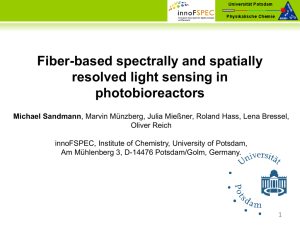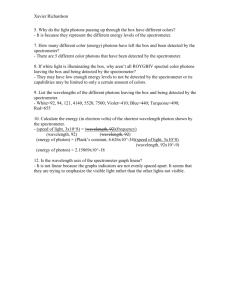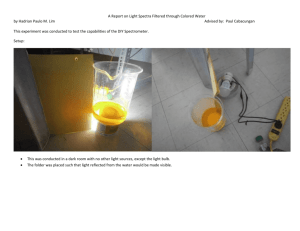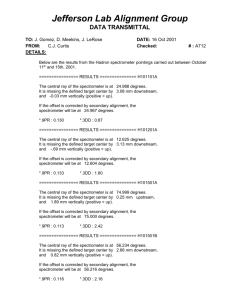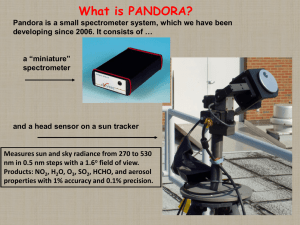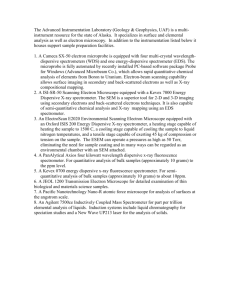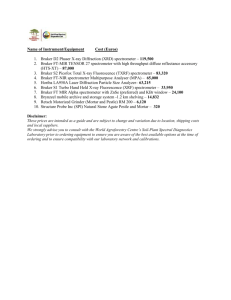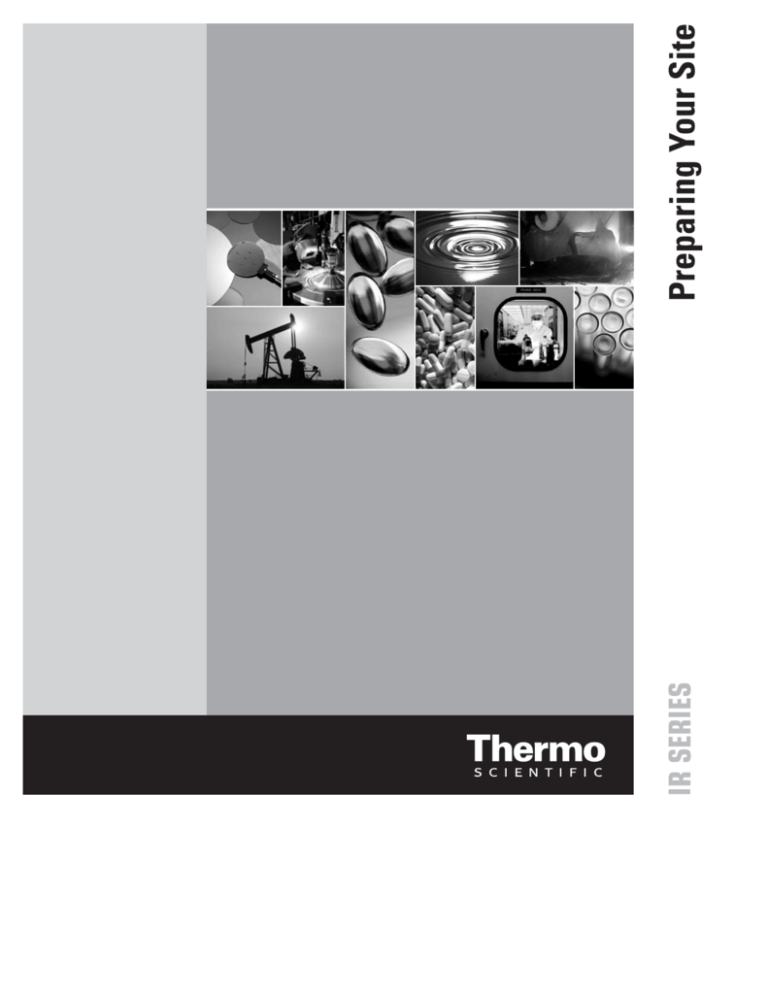
The information in this publication is provided for reference only. All information contained in
this publication is believed to be correct and complete. Thermo Fisher Scientific shall not be
liable for errors contained herein nor for incidental or consequential damages in connection with
the furnishing, performance or use of this material. All product specifications, as well as the
information contained in this publication, are subject to change without notice.
This publication may contain or reference information and products protected by copyrights or
patents and does not convey any license under our patent rights, nor the rights of others. We do
not assume any liability arising out of any infringements of patents or other rights of third
parties.
We make no warranty of any kind with regard to this material, including but not limited to the
implied warranties of merchantability and fitness for a particular purpose. Customers are
ultimately responsible for validation of their systems.
© 2002-2007 Thermo Fisher Scientific Inc. All rights reserved. No part of this publication may
be stored in a retrieval system, transmitted, or reproduced in any way, including but not limited
to photocopy, photograph, magnetic or other record, without our prior written permission.
For technical assistance, please contact:
Technical Support
Thermo Fisher Scientific
5225 Verona Road
Madison, WI 53711-4495
U.S.A.
Telephone: 1 800 532 4752 (U.S.A.) or +1 608 273 5017 (worldwide)
Fax: +1 608 273 5045 (worldwide)
E-mail: us.techsupport.analyze@thermofisher.com (U.S.A.)
World Wide Web: http://www.thermo.com/spectroscopy
Windows and Windows NT are either trademarks or registered trademarks of Microsoft Corporation
in the United States and/or other countries. Intel and Pentium are either trademarks or registered
trademarks of Intel Corporation in the United States and/or other countries. PS/2 is either a trademark
or registered trademark of International Business Machines Corporation in the United States and/or
other countries. Freon is either a trademark or registered trademark of Du Pont in the United States
and/or other countries. Poly-Flo is either a trademark or registered trademark of the Dayco Eastman
company in the United States and/or other countries. All other trademarks are the property of Thermo
Fisher Scientific Inc. and its subsidiaries.
269-118901 rev A
.
Contents
Introduction.........................................................................................1
Conventions used in this manual....................................................2
Location ..............................................................................................3
System dimensions and weights.....................................................5
Environmental Considerations............................................................9
Temperature ...................................................................................9
Vibration ........................................................................................9
Magnetic fields.............................................................................10
Humidity.......................................................................................10
Static electricity............................................................................11
Ventilation....................................................................................11
Utility Requirements.........................................................................13
Electrical requirements.................................................................13
Power line conditioning accessories........................................13
Electrical service specifications ..............................................14
Power consumption .................................................................14
Purge gas ......................................................................................15
Selecting a purge gas ...............................................................15
Minimum Computer Requirements ..................................................17
Preinstallation Check List.................................................................19
.
Introduction
IR Series spectrometers are designed to be extremely durable and
reliable and will work under adverse conditions for extended
periods. To obtain the best performance, however, you should
maintain a stable working environment. Please use the information
in this manual to design a work space that will help ensure accurate
and reliable results from your spectrometer.
If you suspect that you cannot meet the optimal conditions outlined
in this manual, or if you have other concerns, use the information at
the beginning of this document to contact us.
Do not discard this manual!
You will need to refer to this manual when you install your
spectrometer. If you lose or misplace this manual, contact
Technical Support for a replacement manual.
Preparing Your Site
1
Conventions
used in this manual
Note
Important
Caution
Warning
Danger
2
Thermo Fisher Scientific
This manual includes safety precautions and other important
information presented in the following format:
Notes contain helpful supplementary information. S
Follow instructions labeled “Important” to avoid damaging the
system hardware or losing data. S
Indicates a potentially hazardous situation which, if not avoided,
may result in minor or moderate injury. It may also be used to alert
against unsafe practices. S
Indicates a potentially hazardous situation which, if not avoided,
could result in death or serious injury. S
Indicates an imminently hazardous situation which, if not avoided,
will result in death or serious injury. S
Location
Consider these points when planning the location of your system:
• If possible, choose a site easily accessible by our personnel, and
ideally there should be a telephone nearby. Should your system
require service, technical support, or optional RSVP™ remote
diagnostic support, these measures will save time.
• Your spectrometer should be within 2.5 m (about 8 ft) of a power
source.
• The floor (and table or counter used for a work surface) should
be rigid to avoid vibration. Keep the spectrometer away from
HVAC (heating, ventilation, and air conditioning) machinery
and other machinery that may vibrate the floor. Vibration will
not damage the spectrometer, but it can affect spectral quality.
• Avoid placing your spectrometer in a location where there are
significant temperature fluctuations; unstable temperatures can
have an impact on performance. In particular, avoid places near
HVAC ducts or large windows. (Temperatures near a large
window will shift throughout the day, even when curtains are
used.)
Preparing Your Site
3
• Make sure the spectrometer and any accessories will fit in the
work space you choose. Compare the work space with the
dimensions shown in the “Utility Requirements” and “System
dimensions and weights” sections of this manual.
-
For the IR100 or IR300, there should be at least 60 cm (about
24 in) of space above the top of the work surface where the
spectrometer will be placed. The IR200 requires only 45 cm
(about 18 in) of space above the top of work surface where it
will be placed. (For the dimensions of the IR Series
spectrometers, see “System dimensions and weights” in this
manual.)
-
If possible, leave at least 30 cm (about 12 in) of clearance
behind the spectrometer to allow access for service and
maintenance. (The same amount of clearance is needed
behind a Centaurµs™ microscope if you have one connected
to an IR300.)
-
If you use more than one table to support the IR300 when it
has a Centaurµs microscope connected, the table tops must
be the same height; otherwise, the external beam port of the
IR300 will not align.
-
Choose a table height that allows you to work comfortably
with the spectrometer. If you will be using a Centaurµs
microscope with an IR300, keep in mind that the eyepiece
will be about 53 cm (21 in) above the table top.
• There are air vents on the back of the spectrometer. Do not block
these vents.
4
Thermo Fisher Scientific
System dimensions
and weights
The IR100 spectrometer weighs about 14.6 kg (32 lb) and is
approximately 33 cm (13 in) deep by 46 cm (18 in) wide by 26.7 cm
(10.5 in) high. To provide adequate room to work with samples and
remove the main cover (when service or maintenance is needed),
you should allow at least 60 cm (about 24 in) of space above the
work surface where the IR100 will be placed.
26.7 cm
(10.5 in)
46 cm
(18 in)
33 cm
(13 in)
The IR100 dimensions
Preparing Your Site
5
The IR200 spectrometer weighs about 13.7 kg (30 lb) and is
approximately 33 cm (13 in) deep by 46 cm (18 in) wide by 16.8 cm
(6.6 in) high. (It does not have a built-in display.) To provide
adequate room to work with samples and remove the main cover for
service or maintenance, you should allow 45 cm (about 18 in) of
space above the work surface where the IR200 will be located. In
addition, there must be enough space to place an external computer
system near the spectrometer. (To determine the amount of space to
allow, measure the computer system you will be using.)
16.8 cm
(6.6 in)
46 cm
(18 in)
33 cm
(13 in)
The IR200 dimensions
6
Thermo Fisher Scientific
The IR300 spectrometer weighs about 20.5 kg (45 lb) and is
approximately 49.3 cm (19.4 in) deep by 51.6 cm (20.3 in) wide by
23.6 cm (9.3 in) high when the sample compartment cover is closed.
The beam height is 6.4 cm (2.5 in) from the bottom of the sample
compartment. To provide adequate room to open the sample
compartment, or remove the main cover for service and
maintenance, you should allow at least 60 cm (about 24 in) of space
above the work surface where the IR300 will be located. In addition,
there must be enough space to place an external computer system
near the spectrometer. (To determine the amount of space to allow,
measure the computer system you will be using.)
Sample compartment
dimensions
23.6 cm deep
(9.3 in deep)
20 cm wide
(8 in wide)
23.6 cm
(9.3 in)
49.3 cm
(19.4 in)
51.6 cm
(20.3 in)
The IR300 dimensions
Preparing Your Site
7
.
8
Thermo Fisher Scientific
Environmental Considerations
Environmental considerations include temperature, vibration,
magnetic fields, humidity and static electricity.
Temperature
Maintain the temperature in the work space between 16° and 25°C
(60° and 78°F). For better long-term stability, keep the temperature
between 20° and 22°C (68° and 72°F). Temperature changes may
result in long-term drift in the system response.
Once the spectrometer has been installed, plan to leave it turned on.
The internal temperature and stability will change significantly if the
spectrometer is switched on and off daily. Long-term stability
improves with the length of time the spectrometer has been on.
Avoid placing the spectrometer in a location where there are
significant temperature fluctuations; unstable temperatures can have
an impact on performance. In particular, keep sources of heat, such
as hot plates and heating mantles, away from the instrument, and
avoid locations near HVAC ducts or large windows. (Temperatures
near a large window will shift throughout the day, even when
curtains are used.)
Vibration
Floor vibration or acoustical noise from heavy manufacturing
equipment or other sources can affect spectrometer performance.
Minimize or eliminate noise and vibration wherever possible. If
vibration is a problem, consider placing the spectrometer in a
vibration isolation system or on a marble-top table or counter.
Preparing Your Site
9
Magnetic fields
Humidity
Intense magnetic fields, such as those produced by superconducting
magnets, can affect spectrometer performance. The spectrometer
should be located at least 5.5 meters (18 feet) away from such fields.
(Magnetic fields produced by equipment on floors directly above or
below the spectrometer can have an impact on performance.)
Minimize or eliminate exposure to magnetic fields whenever
possible.
IR Series spectrometers are sealed and desiccated to protect delicate
optical components from the effects of humidity. If, however, you are
in a climate that tends to have high humidity, we recommend that
you:
• Maintain the humidity in the range of 20% to 50%
noncondensing. (The maximum recommended humidity is 80%
noncondensing.)
• Avoid rapid changes in temperature that may cause
condensation.
• Purge the system with dry air or nitrogen. (Information about
purging your spectrometer is provided in the “Utility
Requirements” chapter of this manual and in the Installing Your
Spectrometer manual.)
Important
Whenever the spectrometer, a detector, or accessory has been stored
or shipped, immediate exposure to room air can cause condensation
damage. Allow 24 hours for the shipping or storage container to
slowly warm to room temperature before opening it.
If you are moving your system to another site, protect your
spectrometer from changes in temperature and humidity by resealing
it in the protective packaging it was shipped in. Extreme changes in
temperature and humidity may cause moisture condensation, which
can permanently damage the optical components. S
10
Thermo Fisher Scientific
Static electricity
Since static electricity can destroy electronic components, your
spectrometer was specially designed to meet the international
standard: IEC 801-2; electrostatic discharge immunity requirements
for industrial process, measurement and control equipment. If you
have trouble with static electricity in your laboratory, you can
further protect your spectrometer by following these guidelines:
• Maintain the humidity in the range of 20% to 50%
noncondensing. (The maximum recommended humidity is 80%
noncondensing.)
• Use conducting carpet in the work space.
• Place antistatic mats over conventional carpet.
• Avoid plastic chairs that may build up large static potentials.
• Wear clothing that does not hold a static electric charge. (Some
synthetic fibers, as well as some natural fibers like wool, can
carry static electricity.)
• Use a grounding strap.
Ventilation
Standard laboratory ventilation is generally acceptable for IR Series
spectrometers. If, however, you perform analyses that use highly
toxic samples, or solvents that interact with infrared sources, special
ventilation is required.
Chlorinated solvents, perfluorochlorinated solvents, and other solvents
containing halogenated hydrocarbons are often used as FT-IR
solvents. The pyrolysis of these solvents by an infrared source may
produce hydrochloric acid (HCl), hydrofluoric acid (HF), or phosgene
(COCl2). Both hydrochloric acid and hydrofluoric acid are highly
corrosive and may cause accelerated corrosion of the metallic
components in your spectrometer if the seal on the optical
compartment is not properly maintained or if the concentration level of
corrosive gases in the air is excessively high due to improper sampling
techniques.
Preparing Your Site
11
Warning
Hydrochloric acid, hydrofluoric acid and phosgene are highly toxic.
If you regularly use solvents containing halogenated hydrocarbons,
make sure your work area is properly ventilated. S
Be sure to provide storage space away from your spectrometer for
solvents containing halogenated hydrocarbons. Such solvents should
not be left in the sample compartment for an extended time. If
measurements require the sample compartment cover to be closed,
the sample compartment must be purged while the solvents are used.
(For more information about purging your spectrometer, see “Purge
gas” in the “Utility Requirements” chapter of this manual.)
12
Thermo Fisher Scientific
Utility Requirements
If possible, the power connections for your spectrometer should be
easily accessible for service. If you are going to purge your
spectrometer, the purge gas connections should be ready before
installation, and the purge gas lines should be accessible for service.
Electrical
requirements
Power supplied to the system should be from dedicated,
uninterrupted sources. Power must be free of voltage dropouts,
transient spikes, frequency shifts and other line disturbances that
impair reliable performance. Each wall outlet you use must be
equipped with a 3-wire line: live, neutral and ground. If you suspect
power quality problems at your site, or if your system will be
installed in a heavy industrial environment, a power quality audit is
advisable before installation. Contact us or your local electrical
authority for more information.
Danger
To assure a good ground connection and avoid shock hazard, do not
use an outlet that is connected to a conduit ground. The ground must
be a non-current carrying wire connected to earth ground at the main
distribution box. S
Your spectrometer was specially designed to meet the international
standard: IEC 801-4; electrical fast transient burst immunity
requirements for industrial process, measurement and control
equipment.
Power line
conditioning accessories
Uninterruptible power supplies (UPS) are available from us. A UPS
reduces the odds that a power loss in the building would result in the
spectrometer losing power. Power line conditioners (which ensure
that your service is free from sags, surges or other line disturbances)
are also available in the U.S.A. from us for 120-volt operation. Line
conditioners for 220-volt operation can be purchased locally.
Contact Technical Support for more information.
Preparing Your Site
13
Electrical
service specifications
The table below lists the specifications for electrical service. Contact
our service representative if you have questions about the
requirements. If you are not sure that your power lines meet these
requirements, contact Technical Support for information about
power audits. Outside the U.S.A., contact your local sales or service
representative.
Requirement
Specification
AC input
100 to 240 VAC
line frequency 50-60 Hz; printers may need special 50 Hz versions.
current
15 A (120-volt operation)
7.5 A (220-volt operation)
line
disturbances
Sags, surges or other line disturbances must not
exceed 10% of input voltage (even for a half cycle).
noise
less than 2 volts (common mode)
less than 20 volts (normal mode)
Power consumption
Generally, 50% more power should be available than the entire
system (including accessories) typically uses. Maximum power
consumption and heat dissipation specifications for the spectrometer
and accessories are shown below. The values are approximate.
Item
IR100, IR200, and IR300 spectrometer
Power
Consumption
Max. Heat
Dissipation
45 W
139 Btu/hr
Typical computer and monitor*
460 W
1,570 Btu/hr
Typical printer**
200 W
683 Btu/hr
*
Only the IR200 and IR300 spectrometers use a separate computer and
monitor. Power consumption and heat dissipation values shown are estimates.
See the power specifications on the rear panels or undersides of these units.
** Values shown are estimates. See the power specifications on the rear panel or
underside of the unit.
14
Thermo Fisher Scientific
Purge gas
IR Series spectrometers have interferometers that are sealed and
desiccated to protect delicate optics from water and other
contaminants and to help eliminate the effects of water and carbon
dioxide on your data. If you want to provide additional protection,
and remove a greater amount of water and carbon dioxide, you can
purge your spectrometer. (For more information, please see
“Connecting purge gas lines” in the Installing Your Spectrometer
manual.)
Important
If you use chlorinated solvents, perfluorochlorinated solvents, or
solvents containing halogenated hydrocarbons (Freon® for example),
you must purge your spectrometer. The interaction of these solvents
with an IR source can corrode spectrometer components. Do not
expose your spectrometer to these solvents any longer than
necessary. Optical damage caused by failure to purge your
spectrometer is not covered under your spectrometer warranty. ▲
Selecting a purge gas
You can use either nitrogen or dried air as a purge gas, but if your
goal is to eliminate carbon dioxide, nitrogen is more effective. To
remove particulate matter and oil, you may need to install a 10micrometer filter at your purge gas source. For best performance,
dry air or nitrogen should be dried to a dew point of -70°C (-94°F) or
below.
Danger
Never use a flammable gas to purge a spectrometer. Heat from the
source or from laser absorption could ignite the gas. The purge gas
must be free of moisture, oil and other reactive materials. Use dried
air or nitrogen to purge the instrument. Other gases, even inert gases
such as argon (Ar) or helium (He), can damage the spectrometer. S
The purge gas lines that connect your spectrometer to the purge gas
source should be ¼ inch Poly-Flo® tubing. This brand of tubing is
recommended because it is what the fittings on your spectrometer
are designed to use. (You can use a different brand of tubing, but it
might not fit as well as Poly-Flo tubing.) When setting up your purge
gas source, keep in mind that it must be able to connect to the purge
gas lines and maintain a flow rate of 10 to 35 scfh.
Preparing Your Site
15
.
16
Thermo Fisher Scientific
Minimum Computer Requirements
If you have an IR200 or IR300 spectrometer, your computer must
meet the following minimum requirements for hardware and
software to run EZ OMNIC™.
• Intel® Pentium® II processor with 233 MHz clock speed.
• 64 megabytes of random access memory (RAM).
• Hard disk with 2.0 gigabytes of available space.
• Quad speed CD-ROM drive.
• Ability to display in 16 bit color or greater.
• 1.44-megabyte floppy disk drive for 3.5-inch floppy disks.
• 15-inch SVGA monitor with 800-by-600 resolution.
• Keyboard and serial or bus mouse or PS/2®-style mouse.
• At least one serial port.
• One of the following versions of Windows® software:
-
Windows 98
Windows 2000
Windows Me
Preparing Your Site
17
.
18
Thermo Fisher Scientific
Preinstallation Check List
Location
The location is easily accessible to our personnel.
The system, including packaging, fits through the necessary
doorways and elevators.
There are no floor vibrations from air conditioners, motors, etc.
There are no intense magnetic fields.
The floor and table(s) are strong enough to support the system.
The table height is convenient for using the spectrometer.
There is adequate clearance around and above the system.
A telephone is available within reach of the operator on line.
Environmental considerations
There is no static-producing carpet.
There are no large windows, HVAC (heating, ventilation, and air
conditioning) ducts, or other equipment nearby that would cause
excessive temperature fluctuations throughout the day.
The temperature stays between 16° and 25°C (60° and 78°F), or
for better long-term stability, 20° and 22°C (68° and 72°F).
The humidity (noncondensing) is between 20% and 80%.
The environment is free of dust.
Utility service
A dedicated power line is available.
There is sufficient power to run the spectrometer and
accessories.
There is a definite earth ground (not neutral) for power outlets.
Adherence to local building and safety codes is verified.
A purge gas source is installed (if you plan to purge the system).
If you are supplying your own computer
The computer meets the minimum requirements.
Windows operating system software is installed on the computer.
Preparing Your Site
19
.
269-118901 rev A


